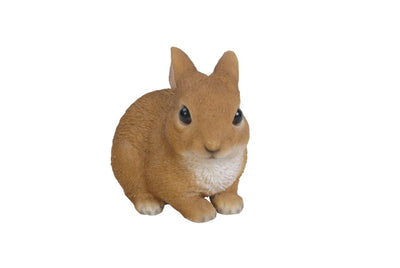The Power of Curves: Softening Your Garden Design with Rounded Decor
When it comes to garden design, straight lines and sharp angles often dominate. However, there’s a growing trend toward softer, more organic forms that can make a big difference in the overall aesthetic of your outdoor space. Curved garden decor is a powerful design tool that can enhance the flow and balance of your garden, transforming a rigid landscape into a serene and inviting space that can help relieve stress and encourage relaxation.

Why Curves Matter in Garden Design
Straight lines, right angles, and geometric patterns are often associated with formality and structure, which can feel rigid or harsh in a garden setting. Curves, on the other hand, evoke a sense of natural flow and relaxation, making your garden feel more inviting.
Rounded elements create a softer, more fluid environment that is more in tune with the natural world. From curving garden paths to circular garden beds, curves help guide the eye around the space, encouraging exploration and discovery. They also promote a sense of balance and calm, offering a visual contrast to the hard edges often found in modern architecture or urban landscapes.
Curved Paths and Walkways
One of the easiest and most impactful ways to introduce curves into your garden is through winding paths or curved walkways. Unlike straight paths that create a direct route, a curved path draws the viewer’s eye along a more meandering journey. This not only adds visual interest but also helps create a sense of mystery and relaxation, as people explore the space in a more leisurely manner.
You can design curves in different ways: gentle sweeping curves for a natural, organic look, or more dramatic twists for an unexpected flair. Materials like flagstone, gravel, or cobblestones can be arranged to create these curved walkways, adding texture and depth to the garden.
Curved paths can also make entryways welcoming, creating a graceful transition from one area of your property to another while setting a relaxing tone right from the moment someone steps into your garden.
Rounded Planters and Pots
Rounded planters and pots are another way to introduce curves into your garden decor. The soft edges of circular pots contrast nicely with the sharp lines of rectangular garden beds or fences. They add a sense of playfulness and openness to the space, especially when grouped together in different sizes.
Consider using rounded planters to highlight key plants or flowers. Large, statement pots placed near entrances or seating areas can create focal points, while smaller pots can be scattered along curved paths or around garden features like water fountains. Choosing planters made from different materials such as stone, terracotta, or metal can also enhance the texture and visual appeal of your garden.

Curved Furniture for Relaxation and Style
Garden furniture doesn’t have to be angular or boxy. Curved outdoor seating pieces, like circular benches or rounded loungers, add a touch of comfort and elegance to your garden. Curved furniture encourages conversation and interaction, creating inviting spaces for relaxation or socializing.

Product in Picture: Radiant Red Relaxation- Cast Aluminium Bistro Set for Outdoor Living
A rounded bench or chair can become a visual centerpiece in your garden, especially when placed near a focal point such as a fountain, tree, or flower bed. Look for furniture made from weather-resistant materials such as teak, metal, or wicker to ensure durability while maintaining,
Curved Water Features
Adding a curved water feature, such as a rounded fountain, pond, or stream, can bring both movement and tranquility to your garden. Water naturally draws attention, and when combined with curved lines, it enhances the sense of flow and calmness. Rounded water features can also complement the natural elements in your garden, helping to create a harmonious balance between all components.
Consider placing a small, circular fountain near a seating area or at the end of a winding path to create a peaceful ambiance. Larger ponds with curving edges or a natural stream will not only enhance the beauty of your garden but also provide a soothing soundscape.
Curved Garden Borders and Edging
Curved borders and edging help to define spaces in the garden while adding a sense of softness. Using curving edges around flower beds, vegetable gardens, or lawns can help to separate different areas without the harsh look of straight lines. These rounded edges also make it easier to integrate plants with different growth habits, such as cascading vines or flowering shrubs.
For added effect, you can use materials like low stone walls, metal edging, or even hedges to create natural, curving borders that complement the organic shapes of your garden. This simple addition can make a huge difference in the flow of your garden, guiding the eye in a pleasing and balanced manner.
The power of curves in garden design lies in their ability to create a softer, more inviting space. By incorporating rounded decor elements whether in paths, planters, furniture, water features, or borders you can transform your garden into a serene and harmonious environment. Curves not only add visual interest and flow but also promote a sense of tranquility that enhances your outdoor living experience.
Consider adding some curved elements to your garden design, and watch as your outdoor space becomes more welcoming, balanced, and beautiful. The simple elegance of curves can help soften your garden’s overall look and bring a peaceful energy to your backyard retreat.



















Leave a comment